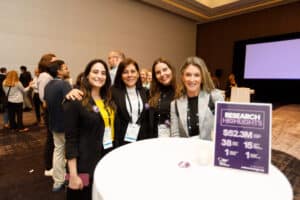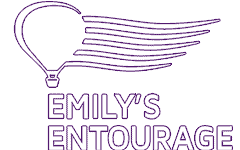NACFC 2024: Top Boston Breakthroughs for the Final 10%
By Chandra Ghose, PhD, Chief Scientific Officer at Emily’s Entourage
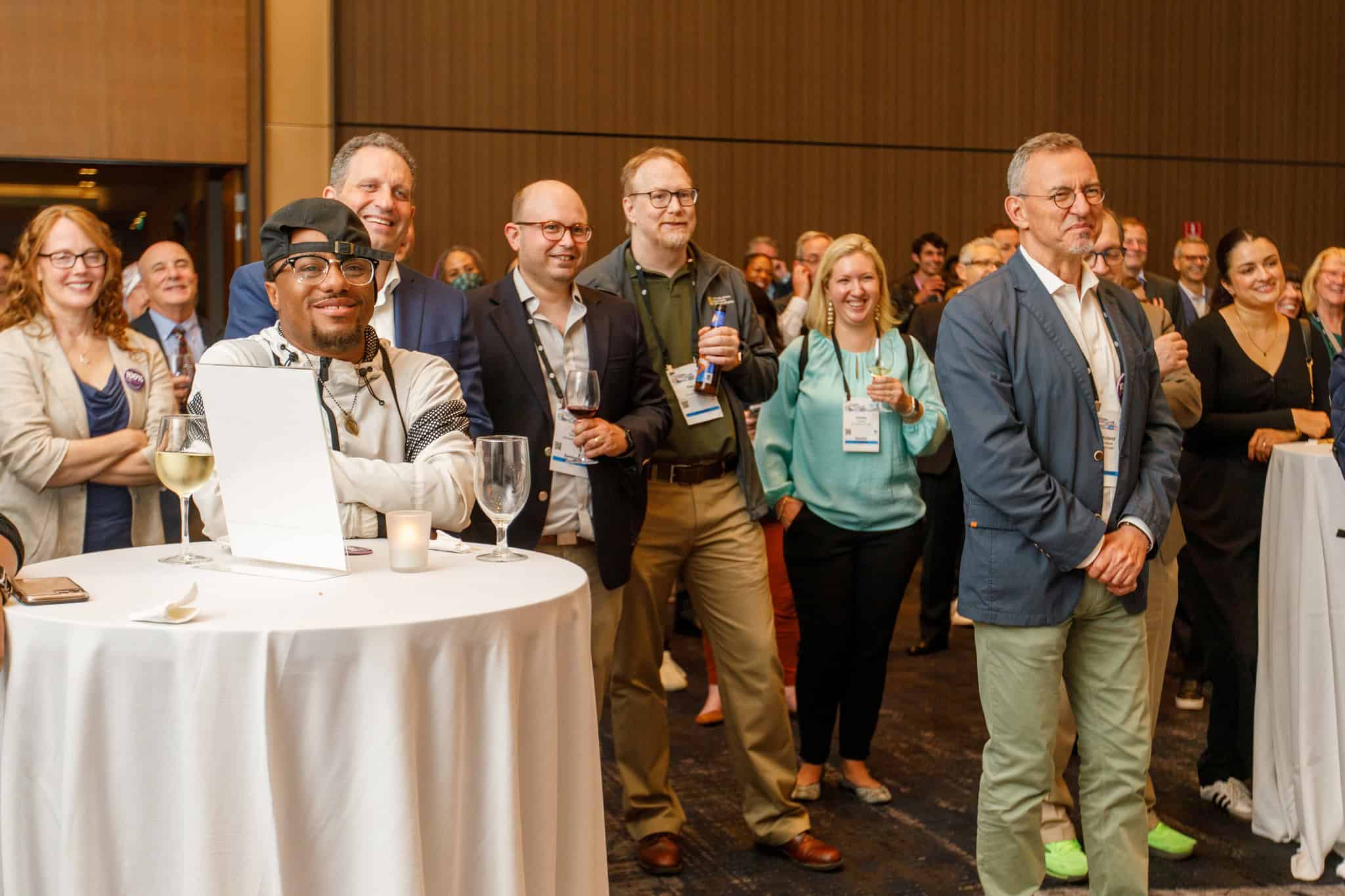
Every fall, the North American Cystic Fibrosis Conference (NACFC) brings together our community with renewed purpose and fresh insights. This year, in historic Boston, scientists, clinicians, advocates, and innovators gathered to highlight the latest advancements in cystic fibrosis (CF) research, care, and drug development. From in-depth discussions on gene therapy to groundbreaking new ideas on CF-related diabetes (CFRD), this year’s conference reflected the drive and determination of a community dedicated to advancing new treatments and improving health and quality of life for people with CF.
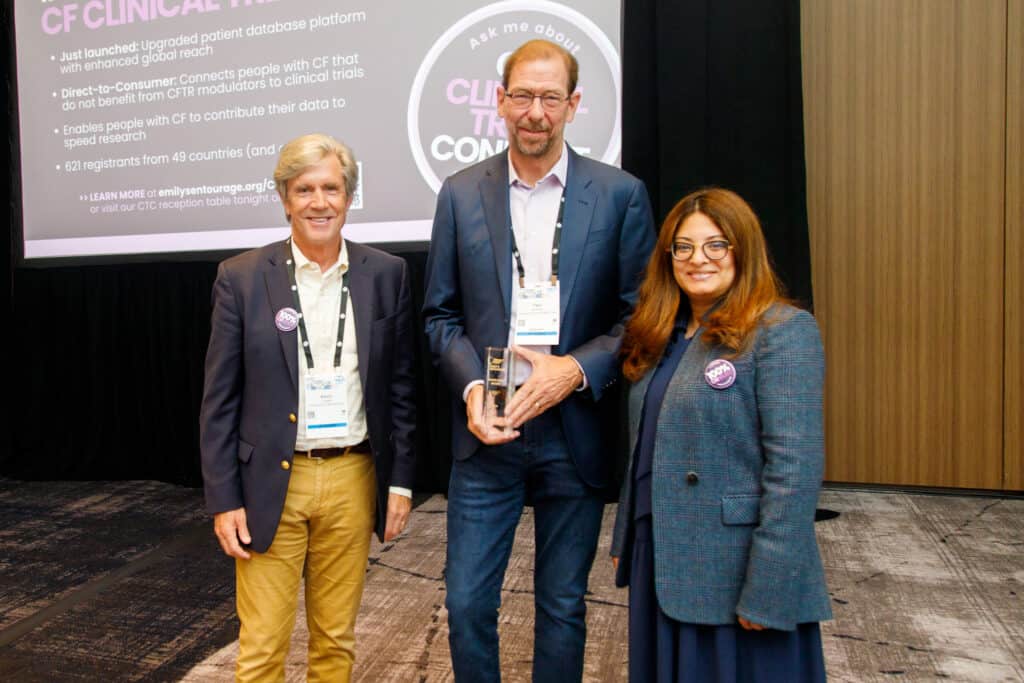
From left to right: Kevin Foskett, PhD, Chair of EE’s Scientific Advisory Board; Paul McCray, Jr., MD, 2024 EE Trailblazer Award Winner; Chandra Ghose, PhD, Chief Scientific Officer at EE.
And of course, Emily’s Entourage (EE) was right in the middle of it all! Our annual reception took place on Friday, September 27 and welcomed over 120 CF researchers, clinicians, biotech and pharmaceutical representatives, and community members. We were thrilled to present our 2024 Trailblazer Award to Paul McCray, Jr., MD, a visionary in CF research whose work has expanded the possibilities for genetic therapies and inspired many. There’s no better way to celebrate the hard work happening across the CF landscape than by gathering the people who make it possible!
Beyond our annual reception, we were thrilled to share data and insights about our newly upgraded patient database, now named the Clinical Trial Connect (CTC), and Clinical Trial Matchmaking Program to strengthen the research community’s efforts toward reaching those in the final 10% of the CF community who are unable to benefit from current modulator therapies. Beth Lavin, our Clinical Trial Matchmaking Program Manager, presented the data in a poster session as well as a workshop entitled “Equity in Action,” in which she spoke about the CTC and clinical trial matchmaking program’s role in accelerating clinical trial recruitment for this ultra-rare population.
Watch EE’s Clinical Trial Matchmaking Program Manager Beth Lavin’s symposium presentation here.
Now that NACFC 2024 has wrapped, I’m thrilled to share some of the most promising scientific highlights with our Entourage—advances that bring real hope and momentum for the final 10% of the CF community!
1. Cracking the Gene Therapy Code
The opening plenary session gave us an inside look at the scientific creativity tackling CF’s biggest hurdles in genetic therapies. Daniel Siegwart, PhD, from UT Southwestern and Joe Pilewski, MD, from the University of Pittsburgh shared their approaches to making gene therapies work in the lungs. Siegwart walked us through new techniques in delivering these therapies directly to lung tissue, while Dr. Pilewski highlighted the importance of innovative clinical trial designs to speed the development of treatments for rare CF mutations. Their message was clear: real progress is being made, with a focus on solutions for everyone with CF, especially those with rare mutations who’ve had to wait the longest.
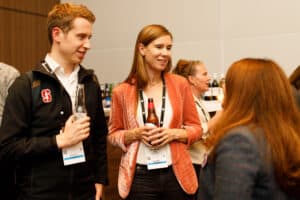
2. Gene Therapy for All: Inching Toward the Finish Line
At EE, we’ve long championed the potential of gene therapy to transform CF care—and NACFC 2024 showed just how close we’re getting to making this dream a reality. Presentations ranged from enhanced CFTR gene correction techniques to in-utero gene delivery, showcasing a spectrum of advancements that’s incredibly promising. Genetic testing now allows doctors to identify CF before a baby is born. Early diagnosis, combined with unique characteristics of fetal development, could make prenatal gene therapy a powerful approach, potentially overcoming some of the biggest challenges in gene delivery. These strides are more than just theoretical; they represent real, actionable hope, and it’s gratifying to know that EE has played a pivotal role in catalyzing these gene delivery breakthroughs.
3. Breakthroughs for the G542X Mutation
One session that especially hit home was Lucia Nicosia’s presentation on adenine base editing for the G542X mutation. The G542X mutation, a rare nonsense mutation, is one that remains resistant to currently available CFTR modulators. Nicosia’s work demonstrates how adenine base editing—a powerful gene-editing technology—can target and potentially restore function to cells carrying this mutation. This promising approach offers not only a glimpse into the future of personalized gene therapy for CF but also marks a hopeful leap toward therapies that will finally include those with this mutation. It’s progress like this that truly speaks to the heart of our mission here at EE and underscores the power of science to rewrite the future for the final 10%.
 4. Bringing Gene Therapy to the Lungs: The Delivery Challenge
4. Bringing Gene Therapy to the Lungs: The Delivery Challenge
Delivering gene-editing technology directly to lung cells is a monumental challenge, but the progress showcased during the symposium sessions demonstrated just how close we are to achieving it. Ariel Aspiras, PhD, from the CF Foundation, presented groundbreaking research on using virus-like particles to deliver CRISPR/Cas9 to lung cells, offering a promising pathway to directly repair genetic mutations in the lungs. Meanwhile, Alexandra Piotrowski-Daspit, PhD—a 2023 EE grant recipient—from the University of Michigan, shared transformative findings on in-utero delivery with polymeric nanoparticles in non-human primates. The possibility of delivering gene therapy before birth could be revolutionary for CF, offering hope for early intervention that could change lives from day one.
Learn more about Piotrowski-Daspit’s EE-funded research here.
Why This Matters for the Final 10%
Each of these advancements brings us closer to a future where CF can be tackled at its roots—for everyone with CF. For the final 10% who continue to wait for life-changing treatments, this scientific progress sends a powerful message: you are not alone, and we are racing toward breakthroughs you can finally benefit from. The passion, determination, and sheer resilience of our community all point toward the ultimate goal we hold closest to our hearts: a world where CF is history.
We’re so grateful to every scientist, advocate, company, clinician, and supporter who joined us at our reception in Boston to celebrate this exciting momentum. Together, we’re speeding to a cure—and here at EE, we’re pushing forward with everything we’ve got until we cross that finish line and leave CF in the dust!
